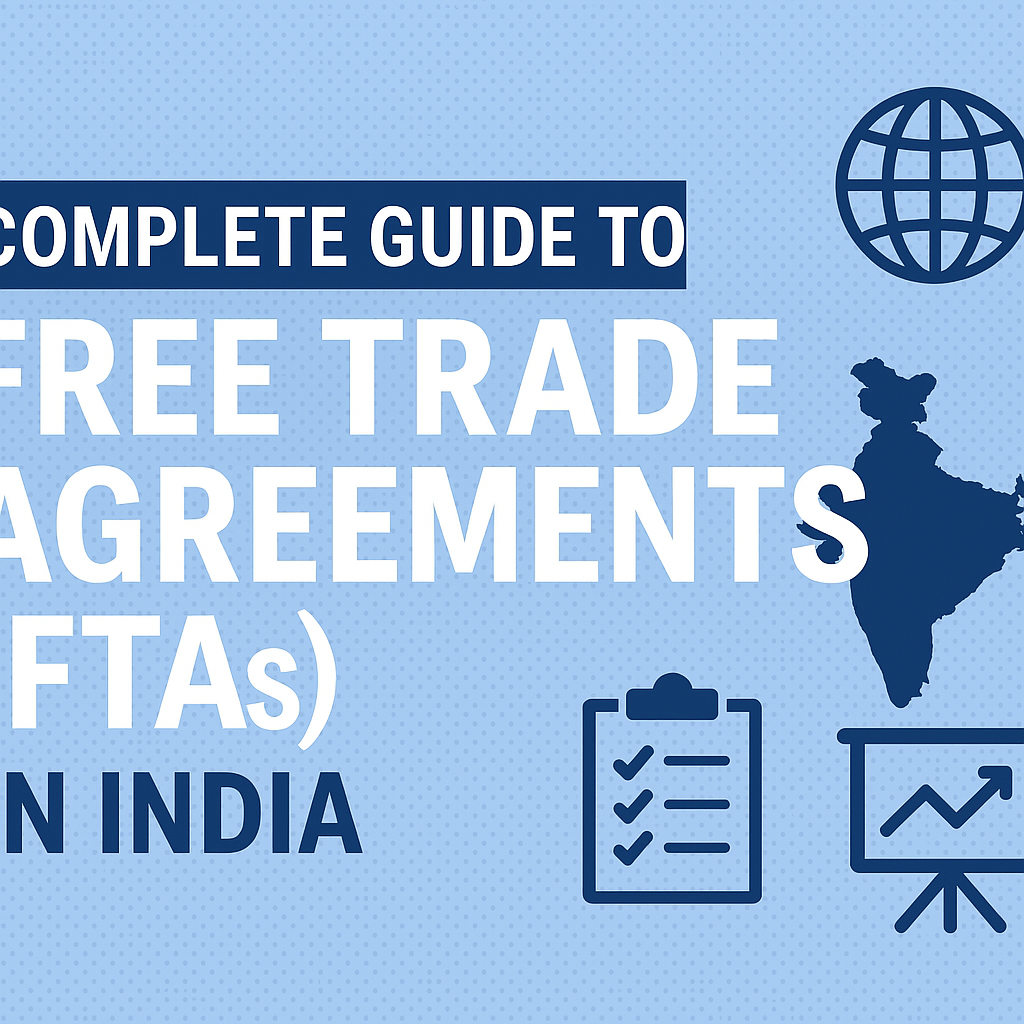Complete Guide to Free Trade Agreements (FTAs) in India
Wondering What FTAs Really Mean for Indian Businesses? You’re Not Alone.
If you’re running a business in India—or planning to go global—chances are you’ve heard the term Free Trade Agreement (FTA) tossed around. But what does it really mean for you? Let’s break it down.
What is a Free Trade Agreement (FTA)?
In simple terms, an FTA is a deal between two or more countries that reduces or eliminates tariffs and trade barriers.
Think of it like this:
- Normally, if you export leather goods to Japan, they might charge 10% duty.
- But under an FTA, that duty could drop to 0% — making your product cheaper and more attractive.
Why Are FTAs Important for Indian Businesses?
FTAs can help businesses of all sizes reduce costs and enter new global markets.
Key benefits include:
- Lower tariffs = more competitive pricing
- Preferential access to international markets
- Simplified customs processes
- Boost in exports and revenue
Real Example: India’s FTA with ASEAN helped Indian auto part exports grow by 30% in just 2 years.
India’s Key FTAs: Countries & Regions You Should Know
Bilateral FTAs (India + One Country):
- India–Sri Lanka FTA
- India–Nepal Trade Treaty
- India–Japan CEPA
- India–South Korea CEPA
Regional FTAs:
- ASEAN–India FTA
- SAFTA (South Asia)
- India–UAE CEPA (2022)
India is also negotiating FTAs with the UK, EU, and Canada.
How Can You Benefit from FTAs?
Here’s how even small exporters can take advantage:
- Know Your HS Code: This helps identify eligible products under FTAs.
- Use a Certificate of Origin (CoO): Required to claim duty benefits.
- Follow DGFT Updates: Stay informed on FTA rules and changes.
- Hire a Consultant or CHA: Get help managing paperwork and compliance.
Common Misconceptions About FTAs
- “Only big companies benefit” – False. Even micro-enterprises can leverage FTAs.
- “Too complex to use” – Not really, if you have the right support.
- “Not worth the effort” – A small tariff cut can mean big profits.
How to Stay Ahead of the Curve?
With global trade evolving rapidly, staying informed and adaptive is the key. Learn, explore, and take action.
Final Thoughts: FTAs are Tools — Use Them Wisely
If you’re into exports, Free Trade Agreements aren’t optional—they’re essential. Learn how they apply to your product, and start using them to your advantage.
Want Help with Export Planning or Understanding FTAs?
Drop your questions in the comments—I reply to every one personally.
Found this useful? Share it with a fellow business owner and help them grow globally too!
—
Let me know if you’d like this version styled with CSS or want it converted into a downloadable .html file for uploading to your blog platform.

